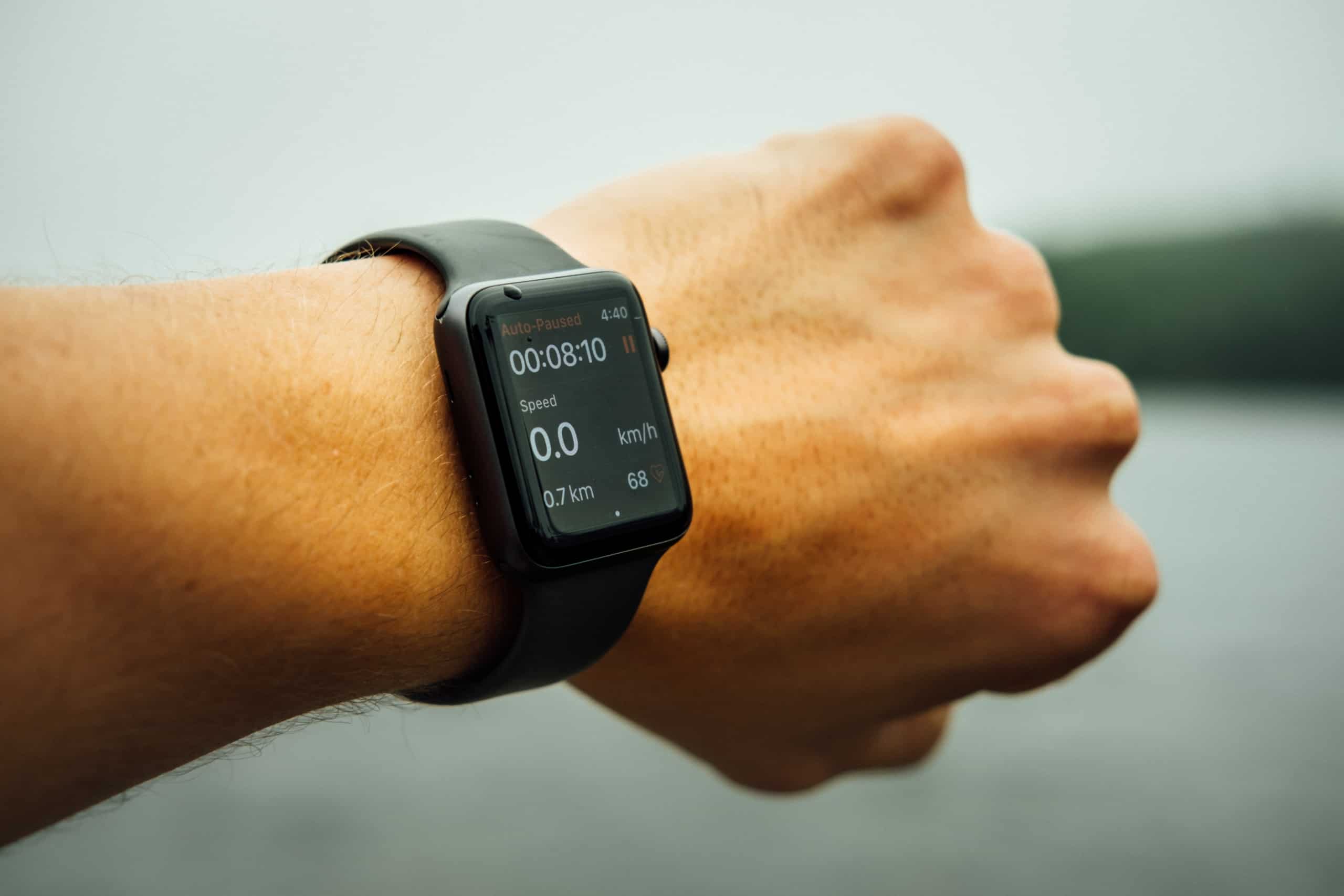Do you spend your workdays stuck inside a cubicle staring at a computer screen? Or are you rushing around taking care of patients all day without a break? Taking a little one-on-one time with nature might be the perfect prescription for your physical and mental health. The U.S. Department of Health and Human Services recommends adults do 2.5 to five hours of exercise a week. Is your job too demanding to make time for the gym? Take advantage of the benefits of Mother Nature and use fitness technology to keep you on track throughout the holiday season. Here are a few suggestions for outdoor activities and a healthy lifestyle.

Photo by on Pexels
Start with a Fitness Watch
Thousands of health and fitness apps are available to help you meet your fitness goals. A Fitbit lets you track your exercise, food, weight, and even sleeping habits. Starting on the right foot with a fitness watch can help track your steps for the day with a glance at your wrist.
By default, Fitbit sets a goal for you of 10,000 steps per day, and that’s a noble goal. You can program it and other fitness apps to give you a periodic nudge to get up and move. Take your smart app’s advice: It takes little time to do a quick lap around the building or jog to the parking lot and back. Medical professionals are frequently on the move, making rounds between patients. “Attaining 10,000 steps in smaller increments throughout the day may be more manageable than trying to complete 10,000 steps in one go at the gym,” says Chris Jordan, director of exercise physiology for Johnson & Johnson and author of “The 7 Minute Workout. “Anything you can do to avoid prolonged sitting will benefit your health,” he said.
Improve Your Mood and Reduces Stress
The temperatures are plummeting, but don’t let that stop you. Take a few minutes for yourself now and then to reset your mind—breath in the fresh air. There are a handful of free meditation apps that can help guide you into mindfulness, even if just for a couple of minutes. Apps like these also keep you accountable, giving you a reminder when you set it to meditate. Mediation outdoors helps to activate the senses while taking the time to recognize what is happening to your body. The sights and sounds can improve our mood, reduce stress, anxiety, and even depression.
Aside from breathing in the fresh air, being physically active outside is also very effective. A study from the National Health and Nutrition Examination Survey finds exercising outdoors decreases your risk of heart disease by 27%. Outdoor exercise is also good for your mental health. According to researchers from Michigan State University, being outdoors in nature transforms us and makes us feel good. A short walk around the hospital grounds or at a nearby park can elevate your heart rate and burn calories. People who exercised outdoors surrounded by green space worked out much longer and more often than those who work out indoors. If your workday ends after the sun goes down, utilize your lunch hour to take a 10-20 minute walk before going back inside to eat your lunch.

Photo by Tim Foster on Unsplash
Forest Bathing
A practice in Japan called “forest bathing” is catching on here in the United States. It’s the practice of connecting with nature through sight, smell, hearing, taste, and touch. By opening up all five senses, we can bridge the gap between humans and the environment. Studies show that taking two hours in a forest to unplug and unwind can relax you. So get outside, find a spot in a secluded area and let nature in.
Feast your eyes on the variety of plants surrounding you — and inhale the smell of flowers. Listen to the sounds of crickets chirping or birds singing.
- Grab a handful of soil and let it fall from your hand, or dip your toes in a nearby stream.
- Cut down your own Christmas tree. (With a permit, of course). The fresh scent of pine is relaxing and refreshing.
Being outdoors, immersed in nature can also reduce inflammation and decrease hypertension. Preliminary studies tell us forest bathing may even stimulate the production of anti-cancer proteins. Researchers found a boost in these proteins after people spent an afternoon in the woods. And remember, you can forest-bathe anywhere- regardless of the weather. If you don’t have a forest near you, take a walk in the park, or your garden or yard — anywhere you can find trees.
Improve Your Memory
The benefits of exercising outdoors go beyond burning calories. Immersing yourself in nature benefits the brain. Walking or jogging can improve short-term memory. You don’t have to be outdoors for long to reap the health benefits, either. Just 10 minutes of light exercise can boost brain connectivity.
Eliminate Fatigue
The shorter, colder days of winter can trigger Seasonal Affective Disorder. Symptoms of SAD include fatigue, mood swings, low energy, and difficulty concentrating. Getting outside combats all these symptoms and helps shake off that “blah” mood and revive your spirits. A bonus? If the sun is out, you’ll get a healthy dose of Vitamin D.
Immune System Boost
Harvard researchers found exercise improves your immune system. Regular physical activity reduces many chronic diseases, including bacterial and viral infections. When you’re exposed to the elements, your immune system becomes stronger and produces more white blood cells.
A heart rate monitor will help you to determine the effectiveness of your workout. Another gadget to help you as you’re pounding the pavement? Smart shoes with auto-lacing. You never have to worry about lacing or re-lacing your shoes while running or walking. Some shoes keep your feet warm while you’re out in the woods or running through the park on chilly nights. And they can track your activity, your steps, calories burned, and more. You can use Bluetooth to connect the insoles to your phone or computer and sync your data.
Strengthens Friendships
Enjoying the great outdoors could be as simple as bringing a buddy along. There are many benefits to walking or jogging with a friend in tow. First, there’s accountability. If there’s a set time you schedule to walk at lunch with a fellow doctor — you’re less likely to shrug it off. Working out with someone also makes the workout go by faster, and you’ll develop a deeper connection with that friend. Additionally, the afternoon walk will give you a chance to share how your day is going, vent about any frustrations, and give you two times to catch up.
Whenever you feel stressed or anxious, lace up your tennis shoes and head for the nearest trail or park. If you’re working a long shift and need a mental health break, take a quick sprint or walk outdoors on your break. You’ll return refreshed and ready to conquer any challenges that come your way.











